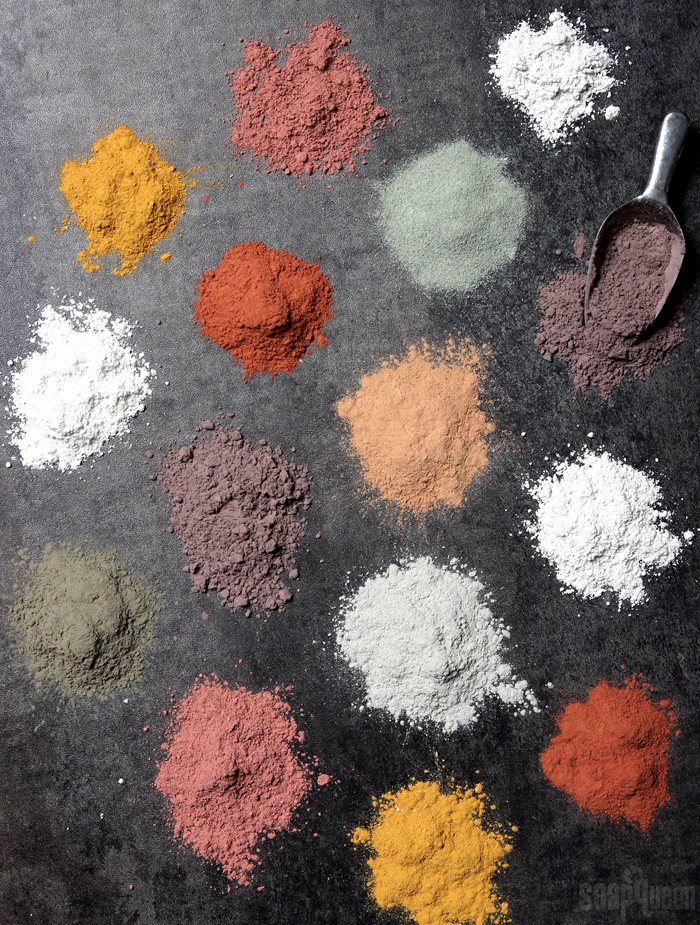
When searching for effective skincare ingredients, the ground may not be the first place that comes to mind. But, clays (which are essentially types of dirt) are well known for their amazing cleansing and purifying properties. Natural clays have been used on the skin for centuries, and continue to be a popular ingredient in products today.
In general, clays are soft, fine-grained mineral substances. There are different types of clay which vary in composition depending on the origin. While the properties of each clay varies, they are most commonly used in skincare because of their absorption properties. When applied, clay pulls oil from the skin, leaving it balanced and clean.
Depending on your skin type, one clay may be better suited for your skin than another. For example, kaolin clay is a fine-grained clay with mild absorption properties, which makes it better for dry to normal skin. On the other hand, French green clay and bentonite clay have stronger absorption properties, making them a good fit for oily skin.
In general, clays are best for normal to oily skin types because they absorb moisture. If you have extremely dry skin, products containing clay can leave your skin feeling a little uncomfortable. Drier skins can still use clay products. But, it’s important to choose a milder clay. If you’re formulating skincare recipes and would like to include clay, learn which is best suited for your skin type below.
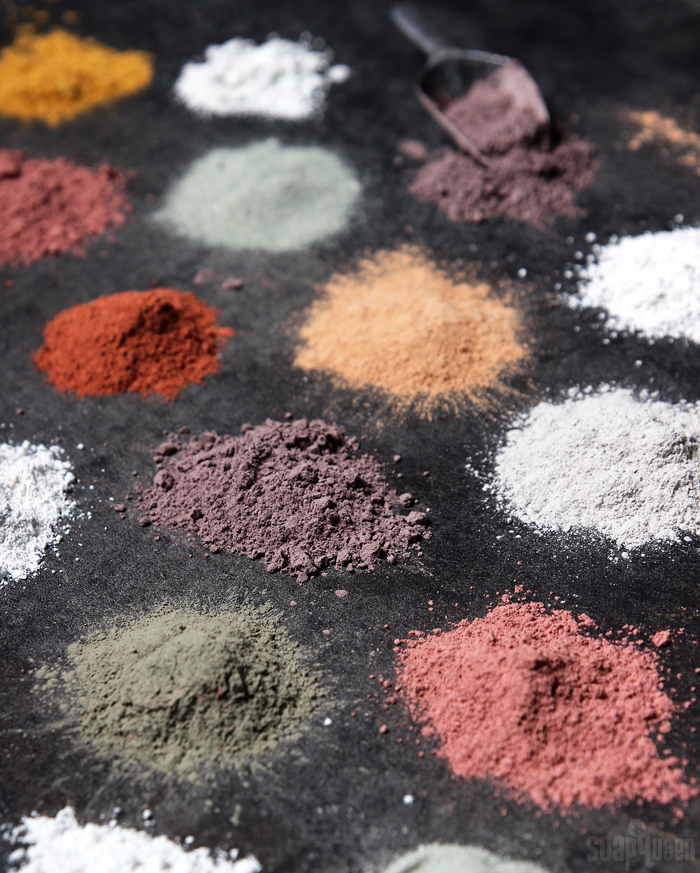
*A note about medical claims and clays – If you do a little research online about clay and skincare, you’ll find a lot of medical claims. According to the web, clays treat acne, reduce scars, treat psoriasis, regenerate skin tissue, draw out toxins from the skin and more. While it’s true that clay is great for the skin, if you sell products that include clay, you cannot claim that your product treats any skin condition. This would classify your product as a drug, which requires testing and approval from the FDA. Learn more about cosmetic vs. drug claims here. In the descriptions of each clay below, I specifically left medical claims out. While you cannot claim the products you sell treat the skin, these medical claims may affect which clay you choose and use for personal use.
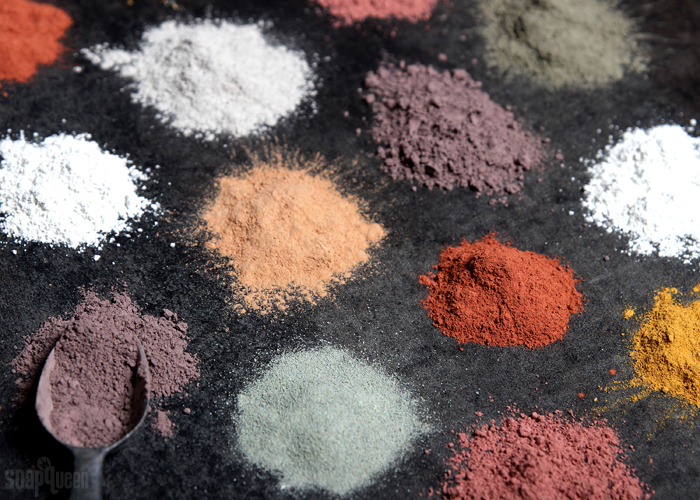
Bentonite Clay
Bentonite clay is created from volcanic ash. The U.S. is the top producer of bentonite clay, with much of the production happening in Wyoming. In bath and beauty products, bentonite clay gives products a nice “slip.” This texture is great for shaving soaps, as it helps the razor glide over the skin. It has strong oil absorbing properties, and is able to absorb more than its mass in water. This makes bentonite clay a great choice for very oily skin.
Brazilian Clay (Natural, Dark Red, Pink, Purple, Yellow)
Brazilian clays are a type of kaolin clay, and come in a wide variety of vibrant hues. The’re naturally colored and do not contain any dyes or pigments. The various shades are achieved by variations in the minerals found in the soil in the different regions of Brazil. Bramble Berry carries five different natural clays — Natural Brazilian, Purple, Yellow, Pink, and Dark Red. Brazilian clays have an “average” amount of absorption, making them a suitable additive for a wide variety of skin types.
French Green Clay
This clay comes from France and is known for its terrific oil absorbing properties. It has a fine texture and is commonly used for color and and oil absorption in facial masks. The light green color comes from decomposed plant matter and iron oxides. It’s best suited for oily skin types.
Green Zeolite Clay
Zeolites are microporous minerals that form when volcanic rocks and ash react with alkaline groundwater. Green zeolite clay has a slightly larger texture than most clays, as well as great absorption properties. Because of the larger texture, it also has very gentle exfoliating properties. It’s best suited for normal to oily skin types.
Kaolin Clay
Kaolin clay is a very fine powdered clay, and can come in a variety of colors. The most common color of kaolin clay is off-white. The fine texture makes it easy to incorporate into a wide variety of projects. This includes eye shadows and cosmetics, as well as soap, bath bombs and more. It is a gentle clay, with less liquid absorbing abilities than most. This makes it suitable for more sensitive and dry skin.
Rose Clay
Rose clay is considered a type of kaolin (kaolinite) clay. It has a fine texture like kaolin, and is suitable for dry skin. The clay is a light to medium pink shade, which comes from a naturally occurring iron oxide. In some projects, it can take on a deep red color or an orange hue. Rose clay makes a fantastic soap additive for both color and gentle oil absorbing properties.
Sea Clay
A dark green clay, sea clay originates from mud laid under the sea millions of years ago. It has a dark green, grayish color. It is commonly used in facial masks to cleanse the skin. It is suitable for normal to oily skin types.
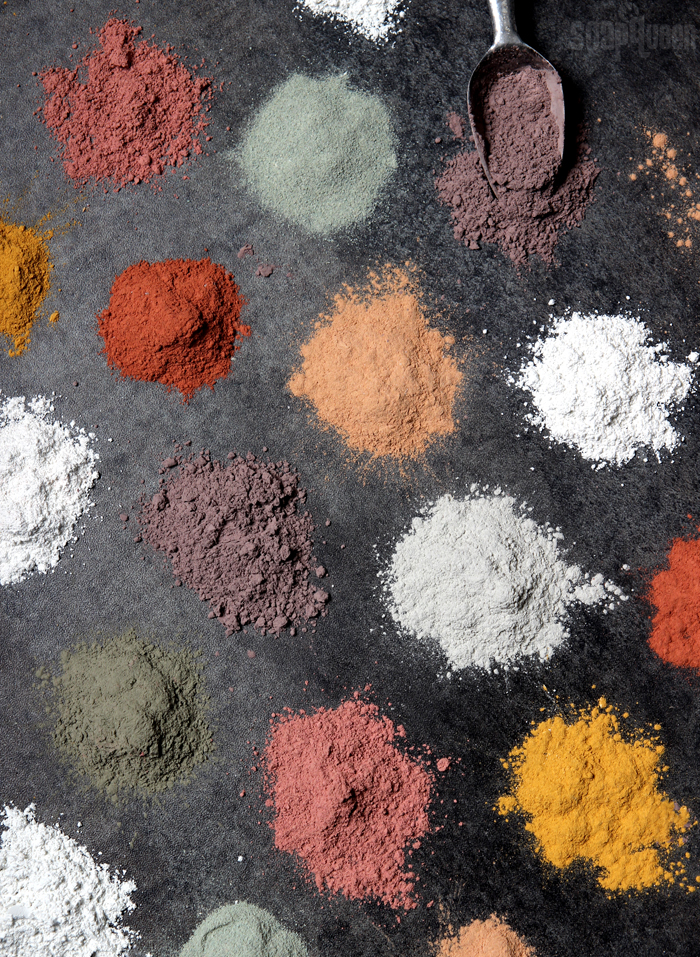
Dry Skin/Normal Skin – Rose Clay, Kaolin Clay, Brazilian Clay (Natural, Dark Red, Pink, Purple, Yellow)
Normal/Oily Skin – Sea Clay, Green Zeolite Clay, French Green Clay, Bentonite Clay, Brazilian Clay (Natural, Dark Red, Pink, Purple, Yellow)
Do you have a favorite type of clay for your projects? Personally, I have combination skin that leans towards oily so I gravitate toward sea and green zeolite clay. But in soap, I love rose clay and purple Brazilian clay for the gorgeous colors. Be on the lookout for some clay inspired recipes next week!

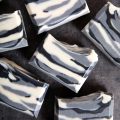
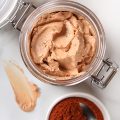
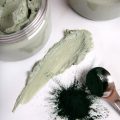
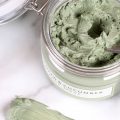
Hello!! I’ll like to start making creams. Which clay can i use as an ingredient in the cream that’ll be suitable for all skin types?? And which works well for brightening and smoothing???
I would probably go with a Brazilian Clay, as that is going to be good for a combination of skin types.
Thank you for the information
Hi Kelsey,
Good Blog regarding the clays . Can I know the best oils and natural butters like ( Shea butter , coco , kukum and mango ) which one is good for dry skin and which is good for oily skin , as well normal skin any ideas or tips can u suggest me .Sorry one more question which oils make more dry and which oils make more moisture plz send that details also . I am working regarding cold process soap past 1 year in India . Kindly help to improve my quality and confident in making natural soap with out chemicals .
Thanks
Jaya
We have plenty of oils to choose from for both dry and oily skin. Our Common Soapmaking Oils post will have details on how to use each one. What recipe are you making? I can help recommend a specific oil good for dry skin for you.
Common Soapmaking Oils: https://www.soapqueen.com/bath-and-body-tutorials/tips-and-tricks/free-beginners-guide-to-soapmaking-common-soapmaking-oils/
Hi
I have mild rosacea and am confused about all the different clays and what they do.
I appreciate that you do not want to state about medicinal claims, but is there anyway that you can give me some advice on which clay may be better for sensitive skin.
I love your site by the way.
Many thanks
Hey!
Thank you for this article.
I have oily, sensitive and acne prone skin. And currently I have active acne on my face. I am taking medication for it.
Which clay would be suitable for my skin? I am confused between kaolin clay and bentonite clay.
Thanks in advance.
You could use either. Kaolin clay is good for sensitive skin and bentonite clay is good for oily skin. Kaolin clay doesn’t absorb as much oil and bentonite clay. What you might want to do is make a few small text batches and try a couple different clays to see what feels best.
Thank you for replying.
I used bentonite clay with apple cider vinegar and rose water and I don’t think it’s suitable on my skin. My acne got redder.
Can I mix bentonite clay with Kaolin clay or just use Kaolin clay?
Regards,
Keerti
If you find these products are irritating your skin, I suggest you stop use and talk with your dermatologist.
Hi,
Is it possible to colour your soap white by only using Kaolin Clay? I made a batch of CP soap today with the aim of creating a white bar of soap by incorporating Kaolin Clay. It did not colour my soap at all, I had to add some titanium dioxide in the end. Did I just not put enough Kaolin Clay or is not recommended to use for colouring purposes?
Thanks for letting me know 🙂
P.S.: I used 8 grams of clay for a 611.76 grams of soap (400 grams of oils).
Kaolin clay doesn’t add a lot of color to the soap, even if you add quite a bit. Titanium dioxide is the best way to lighten your soap.
Titanium dioxide: https://www.brambleberry.com/Titanium-Dioxide-Pigment-P4040.aspx
I am wanting to make this face mask, but am having a hard time finding any type of Brazilian Clay.. I was going to substitute it for Rose Clay but am also having a hard time finding that as well. Is there any other clay you would recommend for normal/dry skin?
You can find Brazilian clays and rose clay at our website, BrambleBerry.com. Find all the clays we carry here: https://www.brambleberry.com/Clays-C48.aspx
Hello, I want to add a new clay mask product for my customers. Do you have any recipes that are dry? Also, what preservatives would you consider as all natural? I want to keep my products as natural and chemical free as possible.
Yes, we do have dry clay masks. I’ll link recipes below.
Rhassoul Clay Mask: https://www.soapqueen.com/bath-and-body-tutorials/rhassoul-clay-mask/
Cleansing Clay Masks: https://www.soapqueen.com/bath-and-body-tutorials/soaks-and-scrubs/cleansing-clay-masks-on-soap-queen-tv/
We’ve tried natural preservatives and haven’t had good luck, we find they don’t protect against mold and bacteria as effectively as options like Optiphen and Phenonip. You can keep the masks dry and add liquid right before use though.
Hello, I don’t know if I can ask this question here, but I have 3 types of clay at home:
Pink Orchid Clay
Kaolin Clay
English China Clay
I’m trying to figure out what is the difference between each one, if you can maybe help me please? I think that Pink Orchid Clay is the same as Pink Kaolin clay? The English China Clay is very white, and I know that Kaolin clay is also known as China Clay, but I don’t know what the difference is between English China Clay (Which is completely white in color), and the packet that only states “Kaolin Clay”, which is more of an off-white color.
Kind Regards
We haven’t worked with pink or English China clay, so I’m not sure. You may contact the manufacturer to see if they know more.
I want some information about making scrubs and cream from scratch
Absolutely. We have plenty of tutorials on this blog for making scrubs and creams.
Find scrub recipes here: https://www.soapqueen.com/category/bath-and-body-tutorials/soaks-and-scrubs/
And lotion recipes here: https://www.soapqueen.com/category/bath-and-body-tutorials/lotion/
This post has more helpful information on making lotion as well: https://www.soapqueen.com/bath-and-body-tutorials/lotion/how-to-create-homemade-lotion-recipes/
And learn about all the exfoliants you can use in your scrubs here: https://www.soapqueen.com/bath-and-body-tutorials/tips-and-tricks/all-about-exfoliants/
I want to make a large amount of soap for my project but I do not know the amount of lye
You can use our Lye Calculator to find out how much lye and liquid to use: https://www.brambleberry.com/Pages/Lye-Calculator.aspx
Find out how to work with that calculator in this post: https://www.soapqueen.com/bath-and-body-tutorials/tips-and-tricks/using-the-bramble-berry-lye-calculator-2/
What is the best Clay for combination skin to help with acne and removing scaring along with rosacea?
Our clays are approved for cosmetic use only, so they help exfoliate and absorb oil. However, if they treated anything like acne or rosacea, they would be considered a drug by the FDA and need to be regulated as such. Learn more about the difference between drugs and cosmetics here: https://www.soapqueen.com/business/understanding-fda-cosmetic-vs-drug-claims/
For combination skin, I’d recommend Brazilian clays. They have an average amount of absorption and come in a variety of colors.
Hi. I am just getting started in making my own soap. I have done a lot of research and have decided to stay on the more natural side of soaping. I am planning on labeling my soap and listing all indgredients. I know that with my product just being soap, I do not have to list ingredients but I would like to. I do have a question. Is there a list of natural colorants that the FDA approves. I would like to ensure that my products are natural AND safe for soaping purposes. Or any website that will help me in my research. I have searched the FDA website and can not find a list of natural ingredients that are used for coloring purposes. I hope this makes sense. Any help would be very much appreciated.
I missed this question, sorry for the wait Anna. Here is a list of FDA-approved colorants: https://www.fda.gov/cosmetics/labeling/ingredientnames/ucm109084.htm
As you can see, there aren’t very many natural colorants there except annatto. The FDA requires approved colorants to be used when specifically coloring cosmetics. Because natural colors like madder root have not been approved as cosmetic colorants, they should be used in soap for their herbal properties and not their inherent coloring ability. Learn more about that here: https://www.soapqueen.com/bath-and-body-tutorials/tips-and-tricks/using-madder-root-powder-color-soap/
-Kelsey with Bramble Berry
What about rhasoul clay?? 🙂
We haven’t worked with that clay a lot so I’m not too familiar with it, but I did a quick internet search and it looks like it is similar to bentonite clay but is a bit less oil absorbing.
-Kelsey with Bramble Berry
Your blog and tutorials are so useful ! I’m starting a cosmetic business and these have been so helpful. Thank you so much !
You’re welcome Kathy, glad you’re enjoying the blog. 🙂
-Kelsey with Bramble Berry
Very useful information, thank you.
I work with clays a lot. Although Rose clay does make a beautiful dusty Rose bar of CP soap it traces very fast and can seize within micro seconds…. I always mix all my clays with my lye water and let sit for at least a week. What you need to do is be very quick when blending, slowly blend the lye into the oils (if your blender has low use it!) you can easily do this by hand. Once it is blended in use a whisk to blend in your essential oils. DONE don’t try to get to a thick trace this needs to be poured rather runny. It will look like the oils are separating in the mold…. give it 24 hours it is beautiful! Check out our Bay Rose http://www.herbonita.com
Great tips! Clay does accelerate in cold process soap. It helps to mix it with water to slow that acceleration and help the clay mix in smoothly. We like to mix 1 teaspoon of clay into 1 tablespoon of distilled water and add it at trace. If you know how much clay you need for your batch, putting it in your lye works too! 🙂
Learn more about working with clay in cold process soap here: https://www.soapqueen.com/bath-and-body-tutorials/avocado-spearmint-cold-process-soap-tutorial/
-Kelsey with Bramble Berry
Rule of thumb for us has always been 2T plus 1t per 5 pounds of oils.
Very helpful , thank you.
This was a wonderful article!! Thank you!!
Very informative! Thank you.